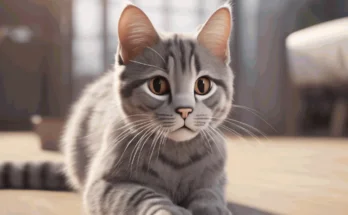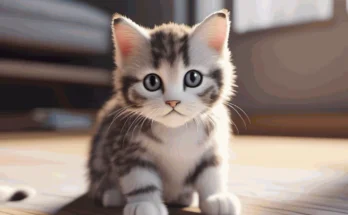You’ve just brought your new Bengal kitten, and let’s be honest – this cat is wild! With their lively character and love of mischief, Bengals need proper schooling and lots of stimulation to be happy, healthy pets. Don’t fear, training your Bengal cat could be very manageable with the proper strategies and masses of endurance. In this newsletter, you may study all approximately your Bengal’s precise trends, a way to harness their intelligence, and hints for schooling even the maximum rambunctious kitty. With the proper technique, your feisty tom cat may be bounding around on a leash very quickly. Bengal cats can be challenging, however they will praise your hard paintings with the aid of being the most amusing and dedicated pets around. So permit’s dive in and get that exceptional cat of yours skilled!
An Introduction to the Playful Bengal Cat Breed
The Bengal cat is a unique breed known for its playful and energetic persona. Originating from crossbreeding domestic cats with Asian Leopard Cats, Bengals preserve a wild appearance while having a gentle temperament.

Appearance
With an extraordinarily spotted or marbled coat and a muscular construct, Bengals are one of the maximum distinct-searching cat breeds. Their fur is gentle and silky, coming in shades like brown, snow, silver, and charcoal. Bengals require weekly grooming with a broom to limit losing and keep their coat smooth.
Temperament
Bengals are shrewd, curious, and love being around human beings. They shape robust bonds with their proprietors and demand attention and playtime. Bengals are natural athletes and enjoy sports that stimulate them mentally and physically. Puzzle toys, hiking systems, and laser recommendations will keep a Bengal entertained for hours. However, with their high-power approach, they can get into mischief if left on their own for long periods. Bengals thrive in homes wherein they obtain lots of interplay and play every day.
Care
In addition to grooming and workout, Bengals require a high-quality eating regimen to support their lively way of life. They may be liable to obesity, so measuring out portions and avoiding unfastened feeding is vital. Bengals also need scratching posts, hiking structures, and multiple hiding spots to satisfy their instincts.
While the Bengal’s wild heritage means they are not always easy cats, their playful, dog-like personalities make them a joy for the right owner. If you want an interactive, entertaining companion animal, the Bengal can make a perfect lifelong friend. However, their demanding needs mean they may not suit every lifestyle. Thorough research into the breed’s characteristics is essential before getting a Bengal.
The 7 Tips & Tricks to Bengal Cat Training

Be patient and consistent
Bengal cats are sensible but also stubborn, so patience and consistency are key. Start training your Bengals as early as possible, preferably whilst you first bring them home. Stick to a normal recurring timetable for training periods to avoid confusing your cat. Repetition and superb reinforcement are great ways to teach them.
Use rewards and praise
Offer your Bengal plenty of praise, treats, play, and rewards when they respond well to training. Bengals thrive on mental and physical stimulation, so reward-based training will keep them engaged. Verbal praise, treats, feather toys, and laser pointers are all great options.
Keep training sessions short
Limit sessions to 10-15 minutes to avoid boring or frustrating your Bengal. End on a high note to keep them interested in learning.
Use clicker training
Clicker training, where a clicker is paired with a treat to mark correct behavior, works very well for Bengals. The clicking sound instantly marks the behavior, so your cat knows exactly what they did right. This precise feedback helps speed up the learning process.
Teach basic commands first
Start with simple commands like ‘sit’, ‘stay’ and ‘come’, before moving on to more complex tricks. Use lots of positive reinforcement and treats to help your Bengal associate the verbal command and action. Once they’ve mastered the basics, you can start chaining multiple commands together.
Provide mental stimulation
Puzzle toys, treat dispensing toys, feather toys, and laser pointers will keep your Bengal entertained when training sessions end. Mental stimulation is important for this breed, so rotate different toys to prevent boredom. Play sessions also strengthen the bond between you and your Bengal, making training easier.
Be flexible in your approach
Every Bengal is different, so stay flexible in your training approach. If one method isn’t working, try another tactic. Hire a professional trainer if needed. The most important things are to keep training sessions positive, reward your cat generously, and avoid scolding or punishing, which will likely backfire. With time and patience, you’ll find the right approach for your Bengal.
Training Your Bengal Cat Basic Commands
Your Bengal cat training from an early age is important for developing well-behaved behavior. Bengal cats are intelligent, so teaching a few basic commands will stimulate them mentally and help them form a close bond with you.
Sit
Hold a treat above your Bengal’s head and say “Sit”. If your cat sits, say “Good sit!” and give the treat. Practice this multiple times per day. Once your cat has it mastered, start only giving the treat when they sits after your verbal command and gesture. This assists them with partnering the word and activity.
Stay
Have your Bengal cat sit. Hold your palm out and say “Stay”. If they remain sitting, say “Good stay!” and give them a treat. Practice this multiple times per day. Once they have it down pat, start taking small steps back after telling them to stay. If they stay sitting, give lots of praise and a treat. Work your way up to being able to walk out of the room and come back before releasing them from the stay command.
Come
While your Bengal is a short distance away, crouch down and enthusiastically call their name and “come!”. Right when they come over, give them love, recognition, and a treat. Practice this regularly during play or training. Once they reliably come when called, start only giving the treat when they come after your verbal cue. This reinforces that coming when called is the behavior that earns the reward.
Leave it
Place a confection on the ground and cover it. Say “Leave it”. If your Bengal cat leaves the treat alone, remove your hand and give lots of praise and another treat from your other hand. Practice multiple times per day. Work your way up to telling them to leave the treat, walking away, and seeing if they leave it. Coming back and rewarding is key. This teaches them self-control and that leaving things alone when told is what earns a reward.
With regular practice and patience, your Bengal cat will get the hang of these basic commands. Be sure to always positively reinforce their good behavior with lots of praise, treats, and play. Consistency is key!
Stopping Your Bengal Cat’s Bad Behaviors
Bengal cats are clever, lively, and social cats that can broaden behavior problems without the right training and mental stimulation. As a proprietor, it’s crucial to minimize undesirable behaviors earlier than they emerge as addiction.
Redirect Aggressive Behavior
Does your Bengal cat have a tendency to chunk or scratch when playing or trying for attention? This aggressive conduct needs to be addressed right now. When your cat bites or scratches, say “No” firmly and ignore them for a few minutes. Once they’ve calmed down, you could deliver them interest once more. It can also help to have interactive toys on hand to redirect their power, which include feather toys, laser hints, and puzzle toys.
Discourage Jumping
Bengal cats are fantastic jumpers and climbers, however leaping on human beings and counters wishes to be discouraged. When your cat jumps on you, don’t give them attention. Instead, place them on the floor and ignore the behavior. You should also make counters and tables less inviting by using double-sided tape or aluminum foil. Provide your Bengal cat with tall cat trees and shelving so they have approved vertical space.
Stop Excessive Meowing
While some meowing is normal for a social breed like the Bengal cat, excessive nonstop meowing can be annoying. Don’t give in to their demands for food or play when they’re meowing constantly. All things considered, award and offer them consideration when they’re peaceful. You should also make sure their basic needs are met and play with them regularly to prevent boredom and encourage appropriate interactive times.
With consistency, and patience, and by not giving in to their demands for attention when behaving badly, you can curb unwanted behaviors in your Bengal cat. Make sure to also keep them well-exercised and mentally stimulated, so they can channel their energy and intelligence into appropriate outlets. Consistent positive reinforcement of good behavior will help ensure your Bengal companion is well-adjusted and happy.
Conclusion
Patience and consistency are key
Training a Bengal cat, or any cat, takes time, staying power, and consistency. Don’t expect your cat to study instructions in a single day. Keep schooling periods quick, around five-10 minutes, and cease on a high word. Provide lots of advantageous reinforcement with treats, praise, and play.
Bengals are energetic, smart cats and they thrive on mental stimulation. Spending fine time education and playing along with your Bengal every day will help give a boost to your bond and offer mental exercise. Be patient through the method and understand that there may be U.S.A. And downs. With regular, tremendous, and praise-based education, your Bengal will get better and better at following instructions and behaving nicely.
Continue reinforcing exact behavior
Once your Bengal has mastered the basic instructions, retain reinforcing that behavior with rewards and rewards. Bad behavior can without problems creep lower back in, so ongoing training and consistency are crucial. Provide your cat with interactive toys to play with when you’re no longer home to keep them stimulated.
With time and practice, your diligent education pays off. Your Bengal turns into a properly behaved and socialized member of the family. While Bengals are frequently defined as “dog-like” cats, they’re nevertheless cats and require endurance, consistency, and rewards-based high-quality reinforcement training to become the accomplice you need them to be.
If at any time you feel overwhelmed, don’t hesitate to consult a professional animal behaviorist. They can evaluate your situation, provide guidance specific to your cat’s needs, and help get you back on track. With their support, you’ll gain confidence in your ability to successfully train your Bengal and strengthen your bond.
The key is staying committed to the long-term process of responsible pet ownership. Your Bengal cat will thrive when provided with training, play, affection, quality food, routine veterinary care, and of course, lots of love. Be patient and consistent, keep at it, and you’ll have a happy, healthy, well-adjusted Bengal companion for life.



